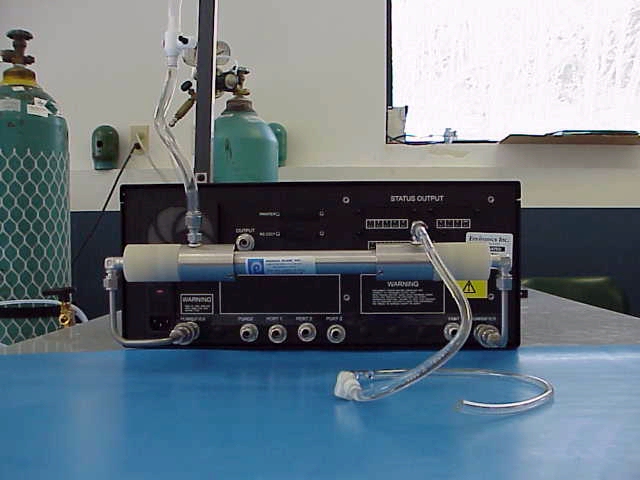
Gas humidification refers to the addition of water vapor to a gas flow to create a specific relative humidity (RH). Relative humidity is the ratio of partial pressure of water vapor (pH2O) in the gas to the equilibrium vapor pressure at saturation at a specific temperature.
Gas humidification is frequently employed to humidify gases that do not contain components that are water-soluble, and air which needs to be used in other processes (such as gas blending). Gas humidifiers are the devices which are used for the addition of water to a gas flow.
What is Gas Humidification Used For?
Gas humidification replicates real life environments, be that for research or calibration. It is routinely used to replicate exhaust, emissions, ambient conditions or even human breath, essentially enabling users to add specific RH levels to a blend of gases to simulate an extremely wide variety of actual conditions or other cases where gas samples contain humidity.
Methods of Gas Humidification
Water-to-Gas Humidifers
Environics uses water-to-gas humidifiers constructed with Nafion™ tubing. These devices work by allowing water vapor to cross the Nafion membrane in order to attain equilibrium of the partial pressure of water vapor on either side of the membrane. Since there is a difference in humidity levels on either side of its membrane, the incoming dry gas stream is humidified as it flows over the tubing as the water moves through in the opposite direction. Only gases that cannot cross this membrane can be humidified using this method.
Humidifiers are available with a variety of lengths and number of Nafion tubes included, allowing for various surface areas depending on the flow rate and RH required. Ranges are typically within 5-95% RH. Temperature must be consistent to obtain repeatable and stable RH. In general, the RH will be reduced by a factor of 2 for each 20 °F (10 °C) increase in temperature, assuming all other variables are constant.
A water circulating pump is often used with the humidifier water source. The pump is needed to keep the water temperature from getting too cold and preventing the production of high humidity levels. As an endothermic process, heat is removed from the water while the gas is being humidified.
Bubblers
Another type of gas humidification is through a bubbler. This system allows dry gases to “bubble” through water at room temperature. This produces very small bubbles of gas, increasing the contact surface which offers maximum humidity to be picked up by the bubbles.
Gas-to-Gas Humidifiers
These gas humidifiers are frequently employed to humidify calibration gases, particle streams or aerosol streams and gases that contain water-soluble components. These work by water vapor outside the tubing being transferred selectively into a gas stream flowing through the tubing. In order to do this, the humid gas must be pumped and run counter to the current of the gas stream. Some systems work by pulling moisture from the ambient environment, and would therefore be limited to this RH as the maximum.
Gas Mixing and Dilution Systems with Gas Humidifiers
At Environics, the humidification option can be designed into a gas mixing/dilution system to humidify a gas blend or purchased as a stand-alone system to humidify a connected gas source. Units can be designed for a fixed RH level or so that the level is adjustable between 0 – 95% (with the maximum depending on the total flow rate). The humidifier is factory calibrated for a specified RH level to an accuracy of 5% (assuming a constant flow rate and gas temperature), and is NIST traceable. A hygrometer option is also available to allow finer control of the outside humidity.
Interested in gas humidification options?
Contact us today if you would like to learn more.

